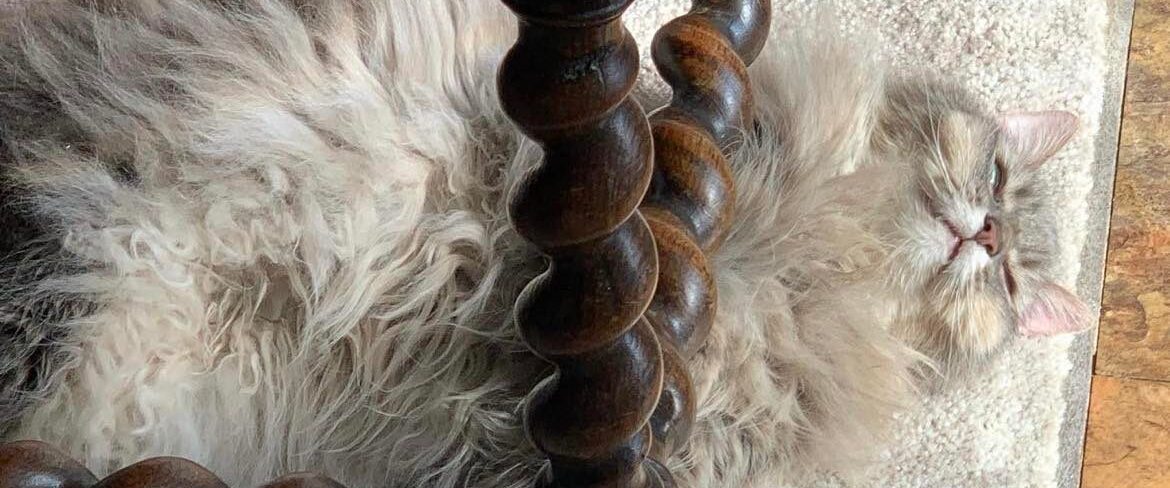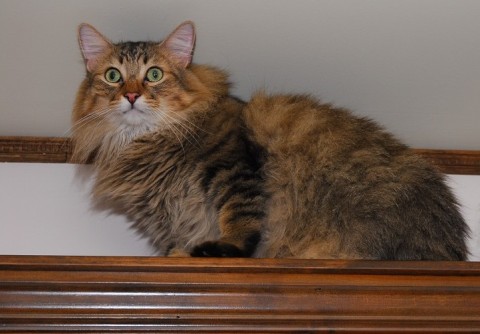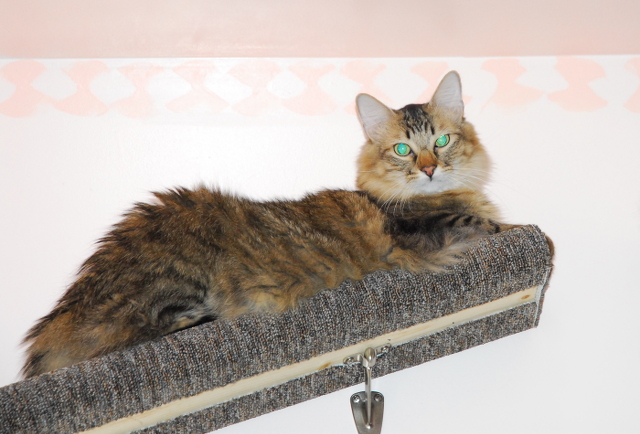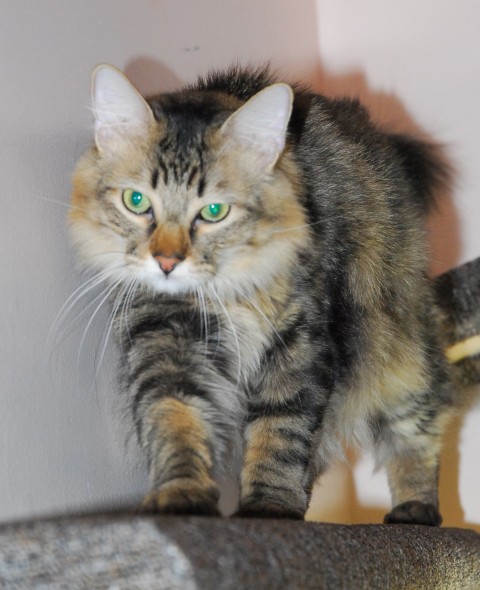Enrichment is an important part of a cat’s life, particularly if that cat is an indoor-only cat. Some cats need more enrichment than others, and for those cats, you might find that you need to be innovative; simple interactive playtime may not be enough. What do you do if you have a cat like that, especially if his unhappiness is leading to bad behavior (such as jumping on tables and counters you’d rather he stay off of)? One possibility is trying something known as clicker training.
Chase’s and my foray into clicker training
Clicker training is something I’ve sort of started with Chase. All four of our cats are indoor-only cats, but Chase sometimes seems especially unhappy about it. Every so often, I’ll put him on his little harness and take him for small walks outside, but I can’t do that all the time, especially in the dead of winter here. I make sure to give him some good interactive playtime each day, but that’s not always enough, either.
One day, I noticed he seemed to be bored with his food. I thought he might do better if I started dividing his meals up into more bowls, and then “hiding” the bowls around the house. It worked, but when I put his food too high, he couldn’t see or smell it, so he had a lot of trouble finding it. Instead of just putting him in front of his food or putting it in front of him, I would lead him to it, using my hand as a sort of cue.
This was the result: He learned that he can follow my hand to food. I noticed that one day when it was time for the cats’ dinner. That night, he ran to the bottom of the stairs and stopped, looked up at me, and mewed. I waved at the stairs as he carefully watched my hand, and said at the same time, “Well, go on,” and up he went. He did that same thing the next day, and the day after that.
That’s where the clicker training came in for him. I use a pen right now, instead of an actual clicker, but whenever he negotiates the shelves, or other obstacles, in the way I want, he gets clicks. When he successfully negotiates the entire “course,” he finds his food waiting for him at the end.
What is clicker training?
Clicker training, also known as “operant conditioning,” is a process by which you can shape your cat’s behavior. Cats can quickly learn to repeat an action when they discover that action has a desirable result (such as treats or food). Punishment is never used with clicker training; it’s entirely reward-based, which is the most effective method of training a cat.
A click is a unique sound your cat’s environment. He knows the sound of your voice, but the click is different. According to Catster, because of that, clicks become a clear form of communication that he can associate with the desired behavior.
How do you start clicker training?
Clicker training requires patience, because while some cats learn to associate the click, behavior, and reward almost immediately, others don’t. According to Karen Pryor, whose website is dedicated entirely to teaching pet owners clicker training, this goes two ways: You think you’re training your cat to do certain things, and your cat thinks he’s training you to click and give him treats. It’s a win-win.
To start clicker training, first get your cat familiar with the sound of the click. This is your first training session, so you want to get him to associate the click with a treat. You shouldn’t use his regular treats or food; you should use something he utterly loves, but doesn’t get very often, like cooked chicken, fish, things of that nature. Pick up a treat, and simultaneously click while you give your cat the treat. That’s how you teach the association.
Once you and your cat have that down, Pryor recommends teaching him something simple, like touching a stick-like object with his nose. Sit with your cat in a place where you frequently interact, like the couch, your kitchen floor, places like that. Give him a treat, and click. Then bring out the object. He’ll look at it and likely try to sniff it. When his nose touches the object, click. Then put it out of his sight and give him a treat. Sit quietly while he eats it, and when he’s finished, bring out the object again. When his nose touches it, give him another click and a treat.
Using the stick-object as your target
From here, you use the stick-object as his target, and that’s how you get him to follow you. You can teach him to follow it a couple of feet, across a room, up and down shelves, and even through hoops. Don’t try to teach him all of this at once, though. Remember, patience is key with clicker training. He might pick it up very quickly or it might take you several sessions to get him to even learn to touch his nose to his target.
What I’m doing with Chase isn’t actually clicker training along these lines. I took something he was already doing and started using a pen as a clicker to reaffirm certain behaviors, such as jumping up on a shelf. My index and middle fingers are his “target,” and I haven’t given him treats for each click he gets.
This isn’t to say that I haven’t thought about starting formal clicker training with him. I have, and I will, because he seems to enjoy this kind of learning. He also seems to be a happier cat since I’ve started this with him, and I can’t imagine that actual clicker training wouldn’t help him out. There are nothing but good things to come, if the clicker training is done right.





